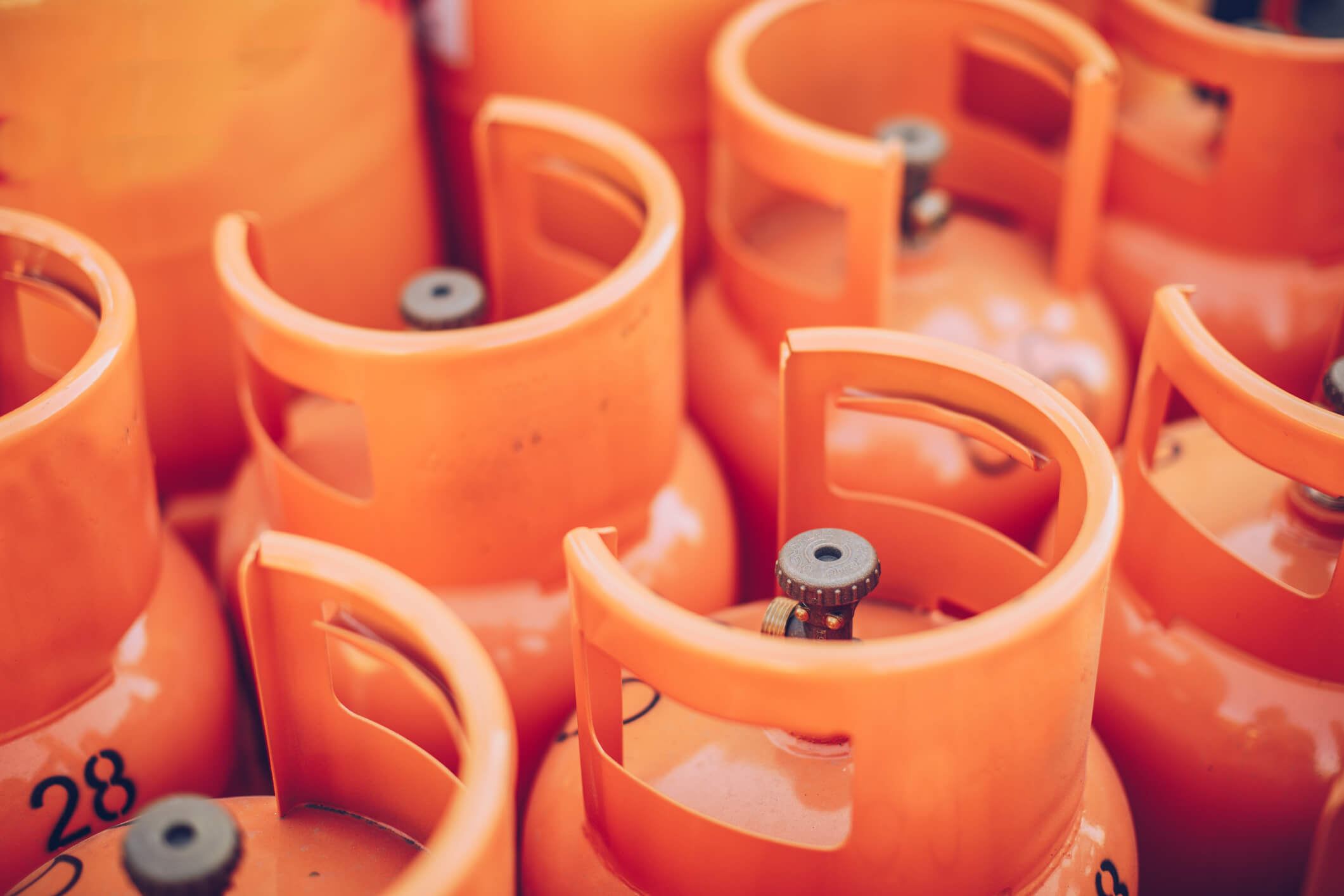

We’ll cover the following topics in our propane grade and quality guide.
Propane (C3H8), otherwise known as LPG, is a form of liquid petroleum formed through natural gas processing and petroleum refining. Propane is also a combustible hydrocarbon-based fuel with a high-octane rating of 105 (R + M). It’s naturally colorless and odorless, but it is odorized for safety reasons to indicate the presence of gas in air, down to a concentration of 0.4 percent. This requires adding 1.0 lbs of ethyl mercaptan, or 1.0 lbs of thiophane, or 1.4 lbs of amyl mercaptan per 10,000 of liquefied petroleum gas.
It’s a popular fuel for two key reasons. First, it has a high energy density. Compared to gasoline, the energy content of LPG is 74 percent. It gives off a large amount of heat, roughly 92,000 BTUs per gallon of propane. Second, it has low vapor pressure, unlike methane. This means propane can be compressed into a liquid state at around 140 psi at room temperature, reducing its volume by a factor of 270 for easy storage. At normal pressures and temperatures above -44F, however, propane remains in its gaseous form.
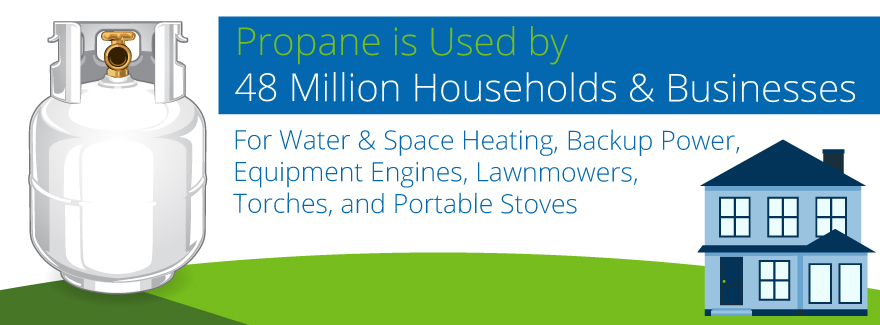
Propane is used by 48 million households and businesses for water and space heating, backup power, equipment engines, lawnmowers, torches and portable stoves. Pressurized gas can be piped through different locations in the home, and because propane is low weight, it’s ideal as a camping fuel. Propane gas is also used as a low-emission approach to fueling buses, trucks, shuttles, taxicabs, police cars and other government vehicles. In fact, it’s the third most commonly used motor fuel in the world.
Propane gas offers the benefit of being a clean-burning, lower-carbon fuel that is more affordable than other fossil fuels. Ninety percent of U.S. propane is domestically produced, with the remainder piped from Canada or transported from overseas. It’s stored in salt caves and shipped via pipeline or truck to companies around the country. With up to 56,000 miles of pipeline and over 6,000 retailers, it’s widely available and easily transported. It’s the only alternative fuel with fueling stations in each state.
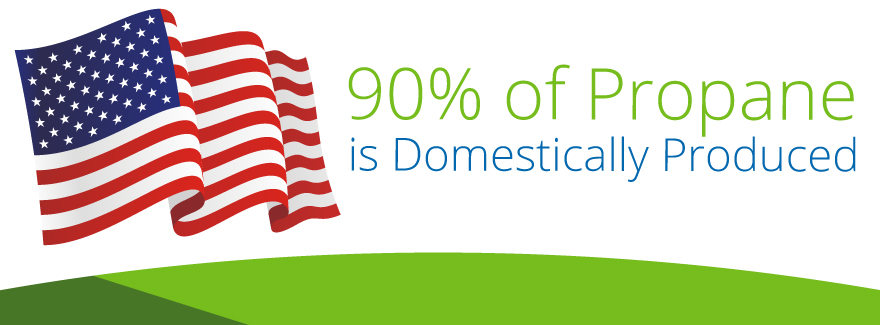
The benefits of propane include the following:




Propane quality refers to the difference between how propane is refined and processed, specifically the proportion of propylene, butanes and ethane. The precise composition of propane varies slightly between different parts of the country and different refineries. Since different grades serve different purposes, one type of propane isn’t necessarily better than another.
Refineries produce three grades of commercial propane, all refined from the same raw materials but differing in propane consistency and purpose. The refinery specifies which grade to process, and each grade of propane gets stored separately.
The American Society for Testing and Materials defines commercial propane grades with Standard 1835, which you can find at ASTM D1835. The different grades of propane are as follows:
HD5, also known as “consumer-grade” propane and “special-duty propane,” is the most commonly used grade of propane distributed throughout the United States for residential use. It’s also the highest-quality propane available to the public and recommended for use with internal combustion engine fuel under moderate to high engine severity. You can tell propane is higher quality by the strong blue flame it produces.
HD5 propane fuel is already one of the cleanest-burning fossil fuels available on the market. It’s also one of the most efficient, making it a great cost-effective choice for consumers. This may also explain why it’s the only type of propane other countries accept as an import.
The following specifications determine the allowable content for HD5:
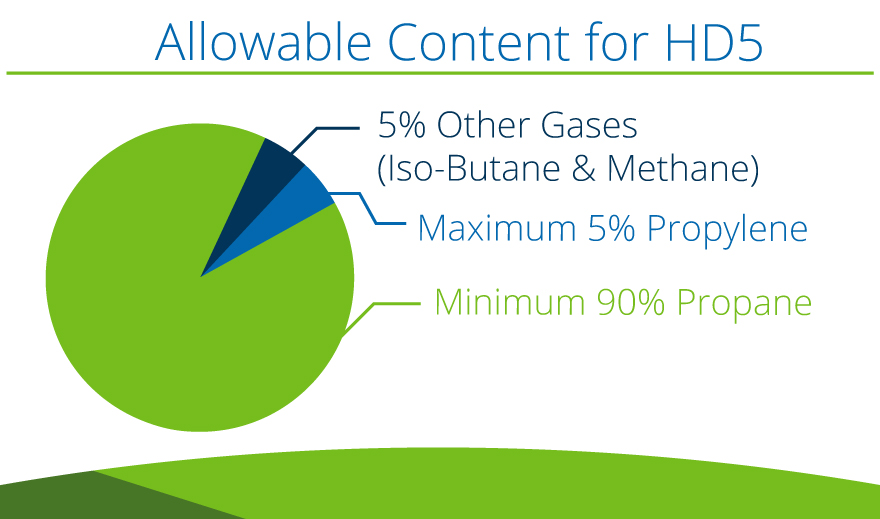
Any propane consisting of at least 95 percent propane is HD-5 grade propane. This means even 100 percent propane gas will be classified as HD5 grade propane, since there is no higher grade of propane than HD5. This means retail companies selling the “highest grade propane” are selling HD5 propane. If a company claims to offer a higher grade than HD5, it’s inaccurate.
This HD5 rating is used only in the United States, Australia, Turkey, Thailand and Canada. All of these countries are big users of propane gas and also offer tax programs to encourage car, truck and bus conversion to LPG.
HD10 propane, mostly used in California, permits 10 percent propylene in the propane/propylene mixture. The higher propylene content may be problematic for engines, causing components to stick during operation. Otherwise, HD10 works fine in propane-powered appliances.
Commercial propane offers different specifications for gas and propylene content, but is used interchangeably with HD10, both of which do not meet specifications for vehicle applications. The American Society for Testing and Materials considers it suitable only for low-severity internal combustion engine applications.
Commercial-grade propane only requires enough propane to hold a flame. Because the product will likely contain many different gases, a flame may produce a variety of colors. Refineries use commercial propane in their processing of chemicals for a variety of industries.
Propane as a fuel is a hydrocarbon, a naturally occurring substance made from hydrogen and carbon. This substance produces the carbon dioxide necessary for powering engines and other mechanisms. This fuel and others are rated based on how stable they are when compressed before spontaneous combustion — also known as an octane rating.
Purchasing the right propane is one of the most important factors in your business’s operation, and finding the right octane rating will keep your equipment working seamlessly. Understanding propane octane ratings will make it easier to decide which tanks and suppliers to trust for your job. This information also gives you insight into how certain fuels are priced.
An octane rating defines the amount of compression a fuel endured before igniting in an octane testing engine. Low-octane ratings mean the fuel will combust more quickly, and high-octane fuels will burn more slowly and evenly. The number given to a fuel indicates where on the scale the fuel is, 87 being the standard and 91 and above premium.
Octane gets its name from the compound — 2,2,4-trimethylpentane. This compound withstands spontaneous combustion and is the benchmark for other fuels’ resistance. Researchers use test engines to rate other fuels — such as diesel and propane — and use those ratings to let consumers know which fuels are best for each job.
Certain fuel manufacturers use terms like “unleaded” and “super” when referring to their octane ratings. These may change across companies, but octane rating numbers are set figures. These distinctions help you know which fuels are suitable for your energy needs, and even which gasoline is best for your car engine.
Often, a propane supplier will advise you on the best kind of octane rating for your fuel needs, and you can verify the supplier’s recommendation if you know your equipment’s octane rating. If you want to use a different fuel for your machinery, ensure the components can handle a higher or lower octane rating.
Although there’s little difference in the quality of HD5 propane, you still need to be sure your propane supplier filters out contaminants in the fuel during transportation. If you’re a propane retailer, customer storage may also contain contaminants or lower-grade propane that can interfere with equipment. When fuel gets contaminated, a tar-like substance will clog the regulator.
The regulator is an important part of the propane gas system that controls the flow of gas and lowers the pressure from the tank to the appliance. The regulator also acts as a safety barrier between the high pressure of the tank and the end-use appliance.
Shopping for a propane provider can be complicated. How can you determine which supplier will provide the best value and live up to your propane quality standards?
You might consider the difference in price per gallon of propane, but differences with a given region may only vary by a matter of pennies. Introductory deals will only last so long, which requires consideration of rates once deals expire. Given the tendency of prices to fluctuate, it’s very difficult to gauge the quality of service by considering price alone. Quality service could mean the difference between always having propane when you need it most and waiting a week or more. When you run out of gas, how will a propane supplier handle the situation?
Keep in mind companies that offer more services and programs are likely more expensive than companies with limited services. Costs may also come in the form of service charges, such as tank lease fees and minimum usage fees, which don’t necessarily guarantee better value overall. These may be added to the price of propane or added separately.
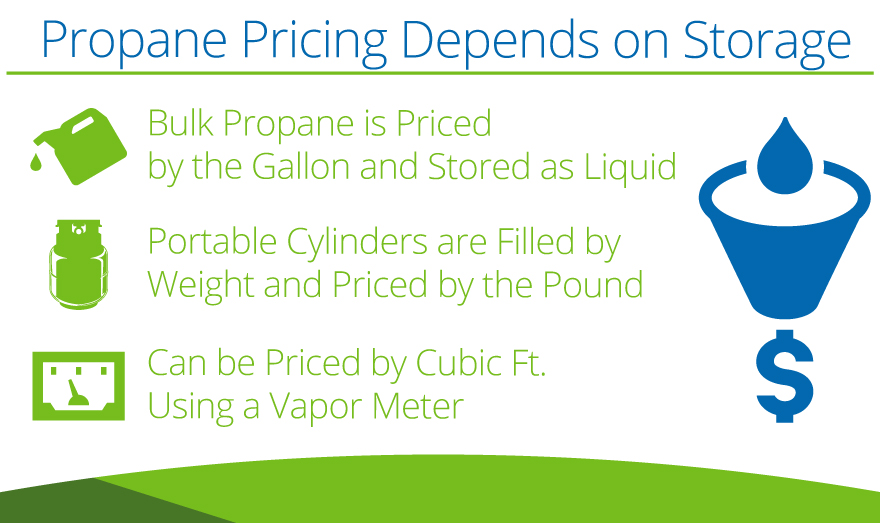
Propane pricing also depends on how propane is stored.
There are two options when it comes to establishing a delivery schedule. You can choose an automatic delivery schedule to ensure you don’t run out of gas, or you can choose a “wait for call” approach, which requires you to call when the supply is low. The only concern with will-call delivery is if you don’t time the call properly, you could be without gas until the supplier can schedule a delivery.
It’s better to establish a schedule for automatic delivery, especially during the winter months when you don’t want to be without propane gas for heating. Choosing a supplier that provides automatic delivery will make it much easier to have enough propane on hand when needed. If you’re on will-call delivery, a good rule of thumb is to schedule a new delivery when the tank gauge is at 30 percent or lower.
Providing great service comes at a cost for suppliers, in the form of new equipment and employee training. To cover these costs, suppliers often charge rental and service fees, such as rent for equipment usage. Other fees may include installation charges and pickup or disconnect charges.
If you don’t like the idea of paying monthly fees to use a company’s tank, you might consider owning your own tank; however, there are significant drawbacks to tank ownership. With ownership comes the need for maintenance, which requires the assistance of gas technicians. If anything goes wrong with the tank, you may need to dispose of the tank, which can be a hassle. Also, a supplier may charge you more to fill your own tank than to fill one that belongs to them.
If a supplier wants to sell you your own tank, you should consider whether you’re willing to take responsibility for upkeep. Since a company takes responsibility for the tank’s ability to safely store propane, a tank rental fee can be a cost-effective option. Finding a supplier that offers low rental fees may save time and money in the long run.
Suppliers may also cover cost of service by charging small fees if you’re short of a minimum purchase requirement. This makes it important to use the correct size tank, since a smaller tank will make it easier to meet minimum requirements. An important consideration may be whether a supplier will let you downsize to a smaller tank at a later time.
Even if you find a supplier that provides economical gas without tank rent, a minimum usage fee or other administrative or delivery fees, you should still find out if the supplier offers service after hours when the tank is empty or in the event of an emergency. Many low-cost suppliers won’t offer the same flexible delivery schedule as more expensive suppliers, which can be a huge factor if being out of gas can be problematic.
If the company has a local office, or nearby storage facility, it’s more likely to respond quickly to emergencies. A 24-hour emergency service line is a definite plus.
Although some suppliers may expect you to fill out a credit application before agreeing to provide service, many suppliers don’t require credit applications. You should consider the types of payment the supplier honors. Do you get the same level of service whether you pay with cash or by credit card? A credit application can be beneficial if it offers a variety of payment plans.
You should also consider asking a company about its safety record or any safety programs. Do regulatory agencies attest to the supplier’s safety record and regulatory compliance? The National Propane Gas Association (NPGA) and state propane gas associations should ensure propane companies are up to date and fully compliant with industry and government requirements.
There are a number of other factors to consider, including the following:
Regardless of additional service fees and requirements, the best propane supplier will be the one that addresses propane quality issues and provides the most flexibility when it comes to serving your needs. You’re not just buying propane, you’re buying into a relationship with a provider who should understand your propane needs and help design a cost-effective arrangement that ensures you always have propane when you need it most.

I wanted to let you know that Shipley did fantastic this season. As we wrap up our season THIS weekend (yay!!) I can’t explain to you how nice it was not to worry about propane. So much time was saved on my part not having to check tanks prior to a weekend, and Saturday night to make sure we’d m...
Read moreI wanted to let you know that Shipley did fantastic this season. As we wrap up our season THIS weekend (yay!!) I can’t explain to you how nice it was not to worry about propane. So much time was saved on my part not having to check tanks prior to a weekend, and Saturday night to make sure we’d make it through Sunday. What a relief. Thanks again!
Read less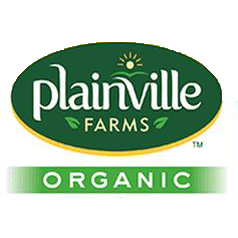
Reliable propane supply is essential for us to be able to provide a comfortable and healthy environment for our turkeys. With Shipley prompt delivery and service is always just a call away with the ability to talk to a real person and not just a answering service. ...
Read moreReliable propane supply is essential for us to be able to provide a comfortable and healthy environment for our turkeys. With Shipley prompt delivery and service is always just a call away with the ability to talk to a real person and not just a answering service. The remote tank monitoring with automatic delivery is a easy way to ensure you never run out of propane. Shipley is the only propane supplier that I recommend to my turkey growers.
Read less